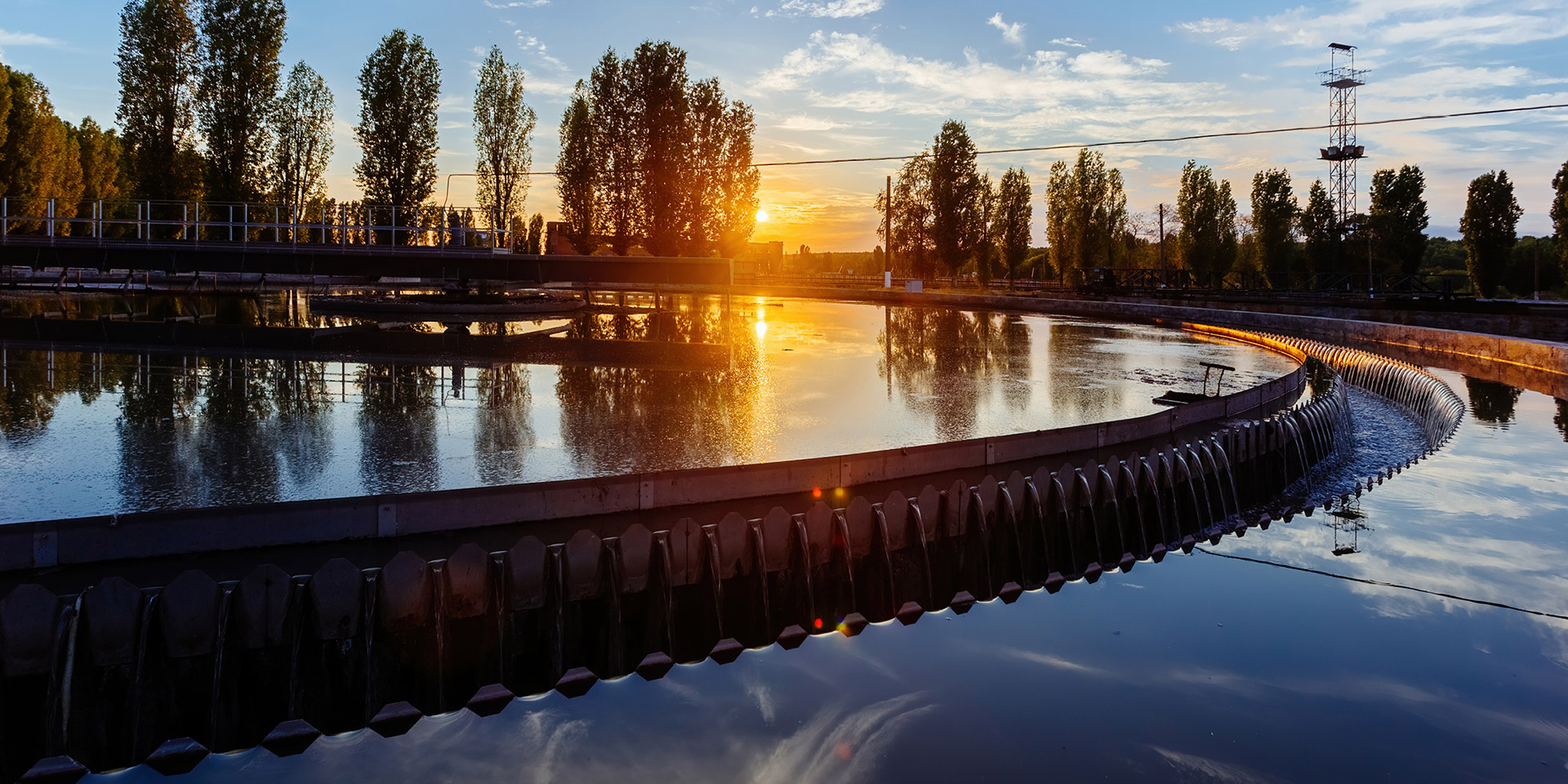Not All Water is Made Equal – How Waste water is Treated
The purpose of waste water treatment is to remove waste components and restore the natural water quality. Waste water is treated in sewage treatment plants, if necessary following pretreatment in a settling tank. Methods are categorized as either
- Mechanical/physical treatment methods
- Biological treatment methods
- Chemical treatment methods
Stage 1
Mechanical methods are usually used in the first treatment stage. This removes around 20 to 30 percent of the (undissolved) floating and suspended solids.
Screening: In the screening facility, the waste water is passed through a flat screen or drum screen. Coarse contaminants such as plastics, stones, leaves and dead animals are left behind in the screen.
Grit chamber: A grit chamber is a sedimentation tank that is used to remove coarse impurities from the waste water such as sand, small stones or broken glass, which can settle at the bottom.
Settling tank: The waste water flows slowly through the pretreatment tank. Undissolved substances (feces, paper, etc.) either sink to the bottom (settleable solids) or float to the surface.
Stage 2
Aerobic and anaerobic biological processes are employed in the second stage of public waste water treatment facilities to break down waste water with high organic content. This stage makes use of microbiological degradation processes.
Degradable organic components in waste water are mineralized as completely as possible – in terms of aerobic waste water treatment, this means breaking it down into water, carbon dioxide, nitrate, phosphate and sulfate as inorganic end products.
The bacterial oxidation of ammonia (NH₃) to turn it into nitrate (NO₃) is referred to as nitrification. Denitrification, on the other hand, refers to the conversion of nitrogen bound in nitrate (NO₃) to become molecular nitrogen (N₂) and nitrogen oxides.
In biological nitrogen elimination, the nitrification step is usually a process that runs smoothly, as long as the sludge is adequately matured and contains enough oxygen.
Denitrification, on the other hand, is highly dependent on the concentrations of organic substrate and dissolved oxygen present, depending on the scope and speed of the process. The nutrient ratio of nitrogen and BOD₅ plays a key role here.
An unfavorable NO/BOD₅ ratio in the influent of the biological stage of the sewage treatment process would normally necessitate a substantial enlargement of the denitrification tank to enable the ratio to be renormalized so as to guarantee compliance with the limit requirements. If the tank volume cannot reasonably be enlarged due to process-related or economic constraints, or if the unfavorable ratio prevents compliance with monitoring values as per the German Waste Water Ordinance Appendix 1/Appendix 51, these limiting factors can be eliminated with the use of external carbon sources.
Two-stage systems were planned and constructed for extensive and stable nitrification processes before nitrogen elimination was even a topic of debate. Today, these facilities require expansion with denitrification capacities to eliminate nitrogen. By separating part of the second denitrification stage while also using external carbon sources, it frequently becomes possible – almost without any need for modifications – to achieve the necessary denitrification results in two-stage systems.
For many years, we have been supplying external carbon sources for use in waste water treatment, adapted to any system based on feedback from master tradespeople in the waste water sector. Our experience has made us a reliable partner for public authorities, landfill operators and industrial cleaning plants.
Stage 3
Abiotic chemical processes make use of chemical reactions such as oxidation and precipitation without the use of microorganisms. In public waste water treatment plants, these are mainly used to remove phosphorus.
Source: Wikipedia




